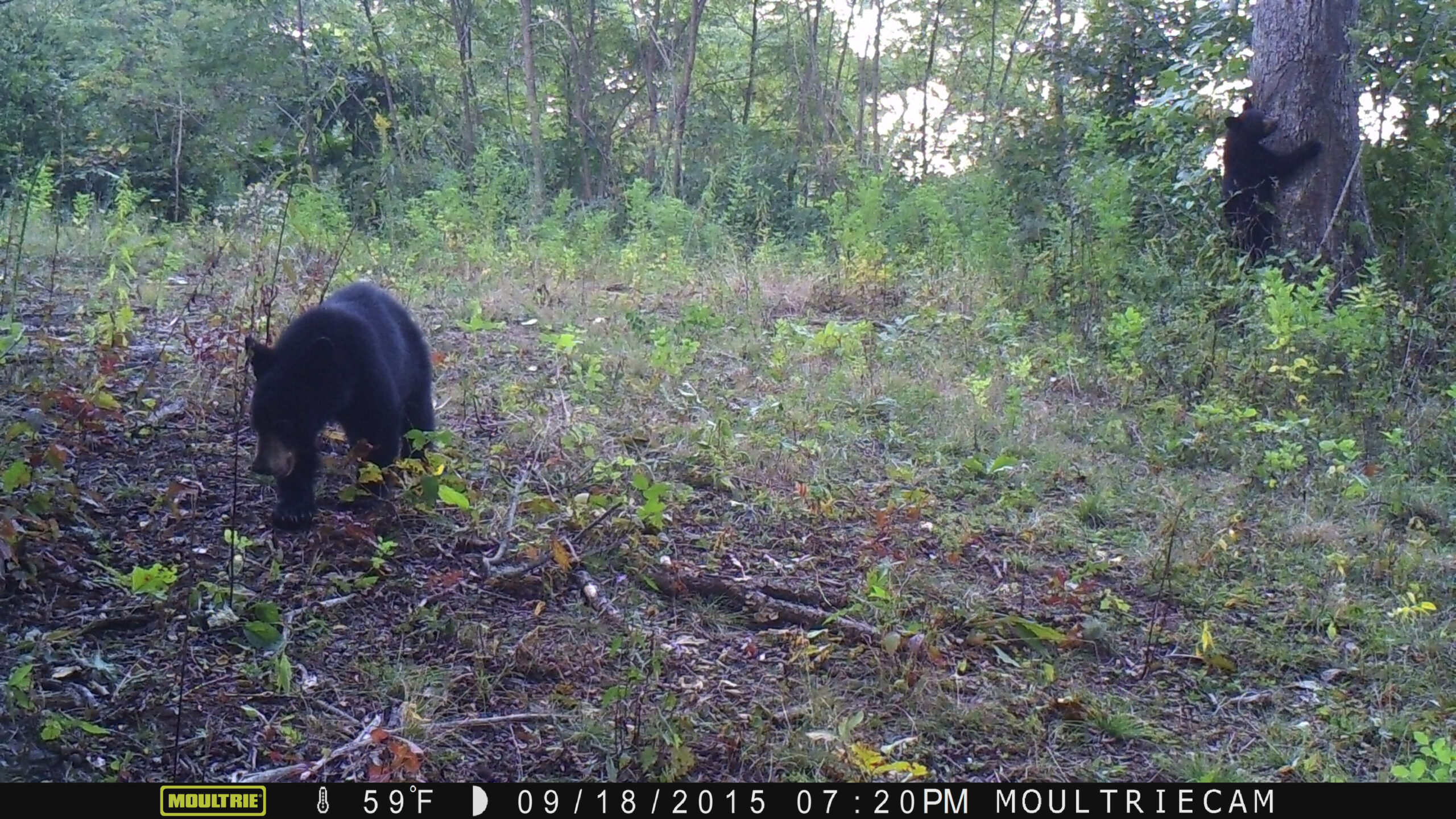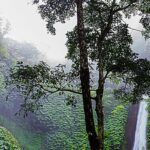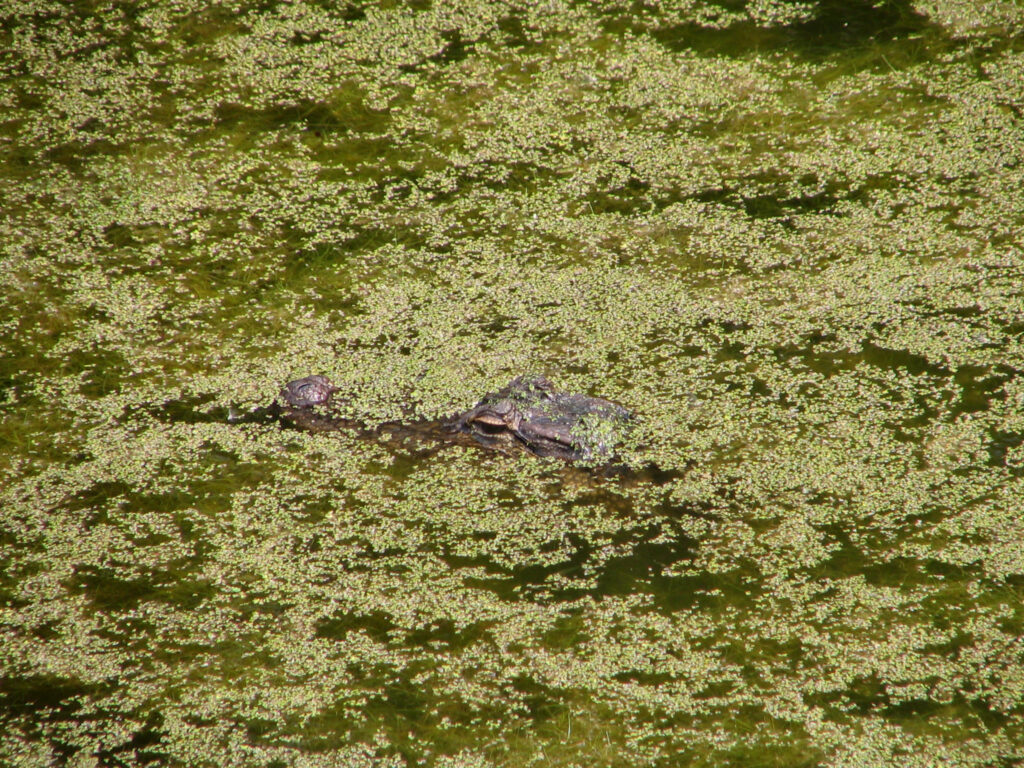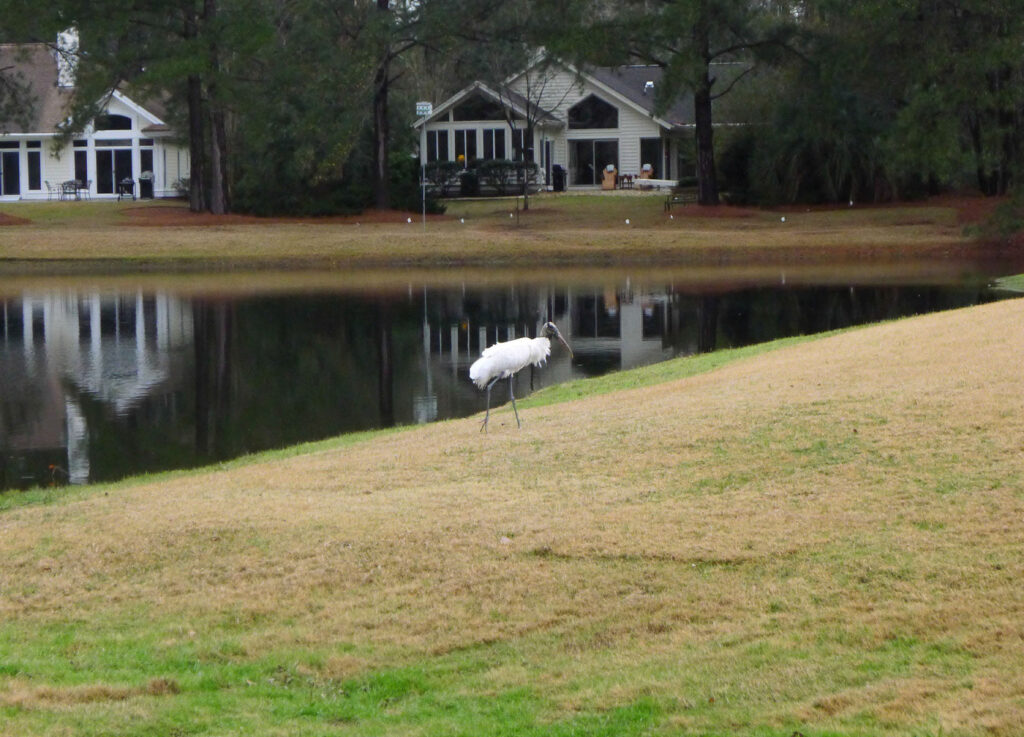
Overview: The smallest of the three bear species found in North America, the American black bear is black, brown or cinnamon. They have short, non-retractable claws that allow them to climb trees easily. This species is found throughout North America, from Canada to Mexico, inhabiting both coniferous and deciduous forests, as well as open alpine habitats. They live in a variety of areas where they can find food, but they typically do not occur on the Great Plains or other open areas.
The American Black Bear is an opportunistic omnivore, meaning it will consume herbaceous vegetation, fruits, nuts, insects, fish, animals, and human-related foods such as garbage and apples. This variety in their diet allows them to inhabit a diversity of habitat types. An important habitat feature for the black bear is a source of fall mast, such as American chestnuts, acorns, beechnuts, hazelnuts, and pine nuts. This available source is eaten during the fall to increase fat reserves in preparation for winter hibernation. American black bears hibernate for up to 7 months in the northern areas of their range, or for shorter periods in the southern portions. Females will typically den and give birth to 2-5 cubs.
Threats & Management: Thanks to effective conservation efforts, the American Black Bear is not currently a species of conservation concern; however, increased conflicts with humans are a threat to the species. As more people encroach on bear habitat, due to urbanization and increasing density of roads, the frequency of interactions between bears and humans has increased. As a result, the leading cause of bear deaths is car accidents. Another threat to the Black Bear is hunters and poachers and the opportunity for illicit commercial trade of bear claws and gallbladders by poachers. In order to maintain successful co-existence between bears and humans, humans must be responsible for the welfare of the bear population by preserving wild areas as important bear habitat.
These bear cubs were caught on NALT’s wildlife cam located on Big Ridge, North Carolina this past September.








